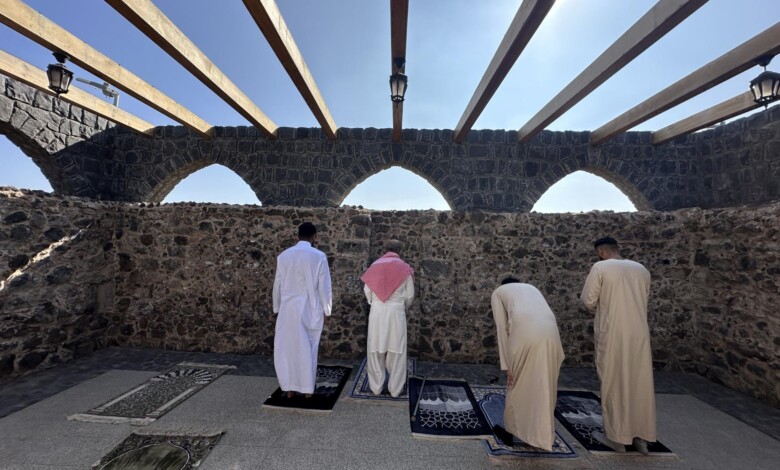Bani Unaif Mosque: A silent witness of the Prophet’s footsteps in Madinah

Madinah is home to many Islamic historical sites closely related to the journey of Prophet Muhammad. It was witness to various exploits and stories documented in Islamic history and mentioned in the noble Hadith.
Among these sites is the Banu Unaif Mosque, located southwest of the Quba Mosque. Masjid Banu Unaif, also referred to as Masjid Musabbih or the Morning Mosque, stands as one of the historically treasured small mosques in Madinah, as it, according to historical sources, is the location where Prophet Muhammad (peace be upon him) offered the Fajr prayer on his arrival in Madinah on the day of the Hijrah.
The mosque derives its name from the tribe of Bani Unaif, a branch of the larger Banu Sa’ida clan, which was one of the prominent tribes of the Ansar—the helpers of Madinah who welcomed and supported the Prophet Muhammad (PBUH) and his companions during the Hijrah (migration) from Makkah.
The Banu Unaif resided in the area between the settlements of Bani Amr bin Awf in Quba and Al-Osbah. This strategic location placed the mosque right along the path of the Prophet’s (PBUH) historic journey of the Hijrah.
Prophet Muhammad (PBUH) would often visit various clans of the Ansar. The visits were part of a broader initiative to strengthen community bonds, spread Islamic teachings, and establish the foundations of a just and unified society.
One such visit took the Prophet to the area of Bani Unaif, where it is reported that he led prayers, thus elevating the spiritual status of the location. A mosque was later established at this site to commemorate the presence of the Prophet and serve the local community.
It is reported that during his travels, Prophet Muhammad (PBUH) visited a sick companion, Talha ibn Al-Bara (RA), who was from the Banu Unaif tribe.
Through the years, the mosque faced periods of neglect and ruin. Despite its dilapidated state, the site continued to be revered for its association with the Prophet Muhammad (PBUH) and in recognition of its historical and spiritual importance.
In 2021, King Salman bin Abdulaziz Al Saud ordered its reconstruction. As a result, the Banu Unaif Mosque underwent a restoration that preserved the shape of its historic stone building to ensure that it stands as a symbol of Islamic heritage.
It was part of a restoration project that included several historical mosques in the Kingdom in general and Madinah in particular, within the Saudi national program for the care of historic mosques.
The original Banu Unaif Mosque was a modest structure that reflected the simplicity and functionality of early Islamic architecture.
Built primarily with black basalt stones, a material abundant in the volcanic region of Madinah, the mosque’s initial design was uncomplicated yet sturdy.
The mosque’s traditional design has been beautifully preserved. It features an open ceiling with spaced timber beams that provide support and allow fresh air to flow through.

